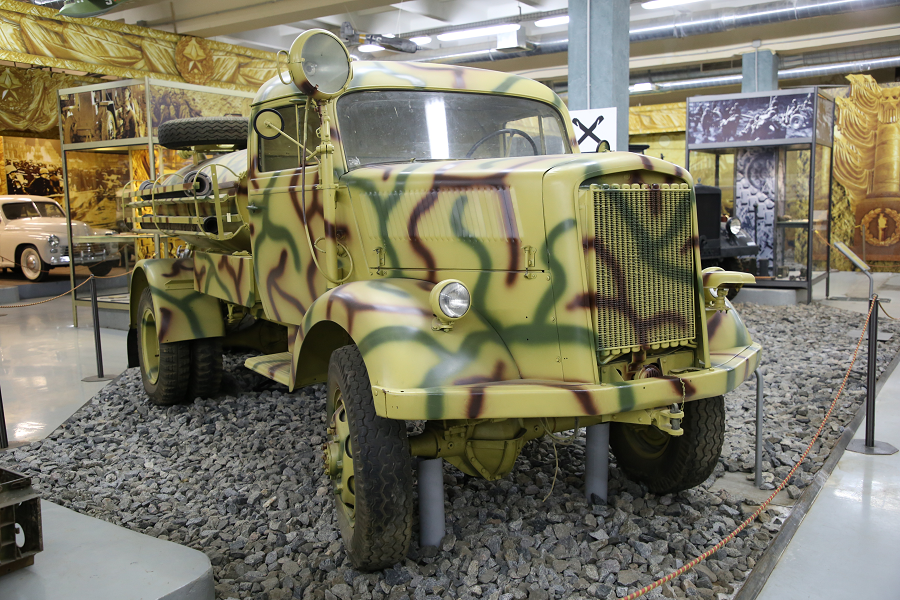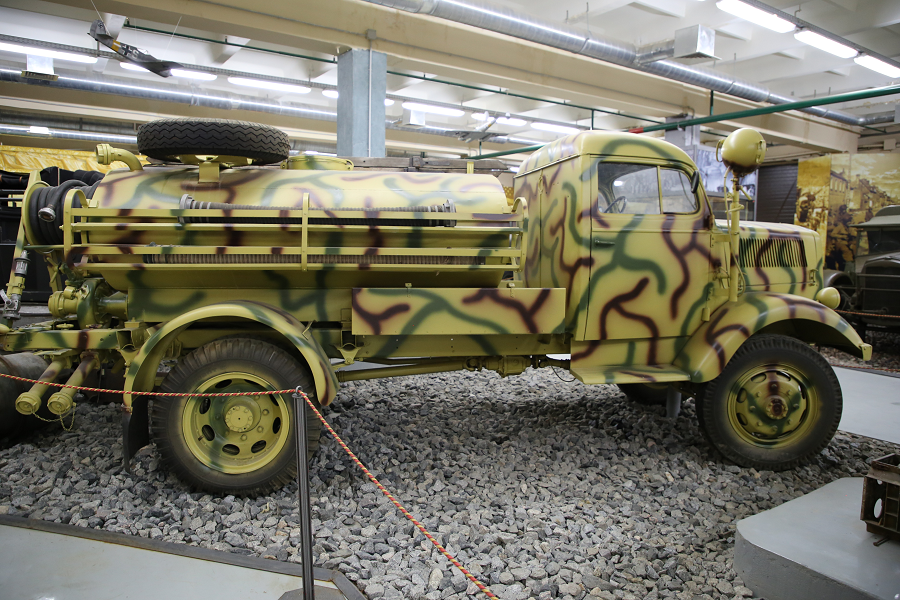A German aircraft refueller OPEL Blitz 3.6 – 6700A TLF 15 from WW2. 6 cylinders, 3.6 L, 75 HP, 80 km/h.
Victory museum, Moscow.
Opel Blitz (Blitz being German for “lightning”) was the name given to various light and middle-weight trucks built by the German Opel automobile manufacturer between 1930 and 1975. The original logo for this truck, two stripes arranged loosely like a lightning symbol in the form of a horizontally stretched letter “Z”, still appears in the current Opel logo. The Blitz name was then applied to the British-made Bedford CF when it replaced the Blitz in certain markets.
During the years preceding World War II Opel was Germany’s largest truck producer. The Blitz name, coined in a prize competition, was first applied to the new Opel truck presented in November 1930. As part of the Nazi economy and the German re-armament efforts the authorities ordered the construction of the Opelwerk Brandenburg facilities in 1935, and through 1944 more than 130,000 Blitz trucks and chassis were produced.
The new Blitz came with two different engines; the heavier models were equipped with the flathead 61 PS (45 kW) 3.5-liter petrol straight-six engine from the 1930 GM Marquette. Following General Motors’ takeover of Opel in 1929, the production tools for the Marquette engine were exported to Germany as this Buick sub-brand was made defunct. Opel’s own 2.6-liter four-cylinder engine with 40 PS (29 kW) was also available.
By 1934, four versions of the one-tonne basic model were offered, along with fourteen versions of the larger two-tonne and 2½-tonne trucks. The Marquette engine was replaced in 1937 with a modern overhead valve 75 hp (56 kW) straight-six engine also used in Opel Admiral passenger cars. This engine was very similar to Chevrolet engines from the same period, to the point that advancing Allies were able to put disabled Blitzes abandoned by fleeing Germans easily back into service using Chevrolet/GMC and Bedford parts.
From 1939, the Blitz 3.6 three-tonne version was used in large numbers by the German armed forces (Wehrmacht) throughout World War II. Variants included an elongated version and the four-wheel drive Blitz A. To cope with the bad road conditions and the rasputitsa mud seasons on the Eastern Front, a half-tracked Maultier (“mule”) Sd.Kfz. 3 version was built using tracks and suspension based on the British Universal Carrier. Among others, these were used as service vehicles for the Messerschmitt Me 323 military transport aircraft.













